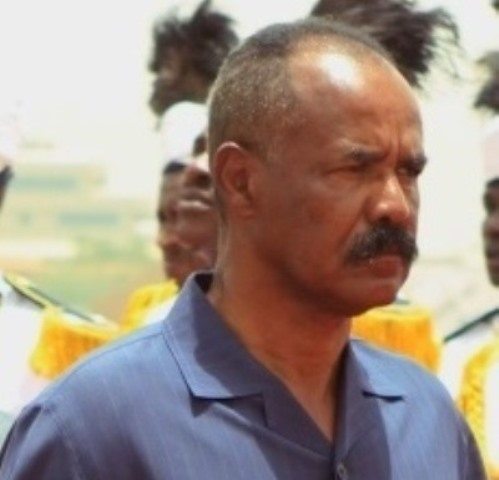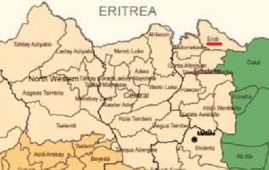On Tuesday, the Kenyan troops have not yet entered Afmadow town, Al-Shabaab’s stronghold, located 100 KMs inside Somalia. The slow progress is attributed to weather, which was a key reason in 2006 for Ethiopia to delay its intervention until the month December.
Reuters reported:
Warplanes swooped low over Afmadow, a rebel stronghold which serves as transit point for goods from Kismayu port. A senior commander of a militia group allied to the Western-backed Somali government said his fighters were stationed outside Afmadow as pounding rain slowed the advance.
"We are in the village of Cag Libaax, 12 km (8 miles) to the west of Afmadow. We are heading to Afmadow but we are slowed by rains and muddy soils," said Abdinasir Serar.
Afmadow resident Hussein Osman Roble told Reuters by telephone that most residents had started fleeing towards Dhobley, a border area which Kenyan military sources say has now been cleared of militants.
"Jets have flown low over Afmadow, terrifying the residents, while al Shabaab is digging trenches and tunnels for defence inside and around Afmadow," Roble said.
Meanwhile al Shabaab has assembled columns of fighters and dozens of battle-wagons mounted with heavy machine guns and dug trenches around the town.
Kenyan officials have remained tight-lipped on the details of the operation but a military spokesman said Kenyan troops were 100 km (60 miles) inside Somalia in Qoqani, which is about 30 km (20 miles) to the west of Afmadow.
"It’s difficult to estimate the length of our operation," said Major Emmanuel Chirchir.
The Kenyans claimed to have killed 75 Al-Shabaab fighters, though they remained silent about casualties on their side – except for the five dead due to the helicopter clash last Sunday.
The military assault, dubbed Operation Linda Nchi, started on Saturday, according to several outlets, though the Kenyans confirmed it on Sunday.
Military Spokesman Emmanuel Chirchir was quoted, by Kenyan news outlets, as saying that: "The next target is to capture Kismayu. There is no retreat nor surrender until it falls under our control."
Concerning the two Spanish aid worker, Reuters claimed, citing a Somali General, Al-Shabaab had moved them north to their coastal stronghold Kismayu as Kenyan and Somali forces closed in.
Al-Shabaab leaders continued making threats. On Tuesday, Sheikh Hassan Hersi reportedly said,
"they attack us by air and on the border; we must unite and fight back until we clear our territory. …"The Kenyan Government will lose many people and assets because of its intervention in our territory,"…."The Mujahideen and all Somalis should fight back (against the) Kenyan troops that have invaded us."
There has been reports of bomb explosion in Somalia’s capital, Mogadishu, and a village on the Kenya- Somalia border. The incident in the capital was a suicide car bomb and killed at least six people.
At the time, a Kenyan delegation, consisting Foreign Affairs Minister Moses Wetangula and Defence Minister Yusuf Haji, was at Mogadisho airport with the President of the UN-recognized Transitional Federal Government (TFG) of Somalia.
The Kenyans and TFG President Sheikh Sharif Ahmed issued a joint communiqué pledging to cooperate in "undertaking security and military operations in the Lower Juba (border) regions of Somalia and to undertake coordinated pre-emptive action and pursuit of any armed elements that continue to threaten and attack both countries." They called for support from the international community to consolidate progresses in Somalia. The two agreed to share and exchange information that is relevant to the fight against cross border crimes, according to media reports.
In the Kenyan Capital, Nairobi, the Cabinet met to approve the military operation. A statement from President Mwai Kibaki’s office stated that: "The Cabinet that met today at State House, Nairobi, also supported and commended the actions taken by members of the Kenya Defence Forces and other security forces in the offensive against the Al-Shabaab".
Media reports from Kenya indicated that security forces arrested two British citizens, with a tourist visa, on suspicion of ted of ‘ties to Al-Shabaab’. One news outlet reported:
‘There are two British citizens who were arrested yesterday. We suspect that they are coordinating the activities of al-Shabaab … or maybe they were passing on information to these people,’ said Charles Owino, deputy police spokesman.
Owino said the two men, one of Somali descent, the other Pakistani descent, were seized in the border town Kiunga, just north of the Lamu archipelago.
Gunmen thought to be linked to Somali militants have kidnapped a British woman and a wheelchair-bound French woman from the idyllic archipelago in separate incidents in recent weeks.
Kiunga is close to Somalia’s Raskamboni forest, a well known rebel hideout in southern Somalia.
Commentators have been busy advising the Kenyans to leave Somalia at the earliest possible opportunity.
David Shinn, a former U.S. ambassador to Ethiopia, remarked:
‘Al Shabaab has avoided attacks (inside Kenya) so far because it benefits too much from the illegal shipment of goods from Kismayu into Kenya and from financial supporters in the Somali community in Kenya,……Al Shabaab may conclude that the Kenyan action must be responded to, however, and the easiest way to do this is to carry out terrorist attacks inside Kenya. This would really ratchet up tension in the Horn.’
Thomas Cargill, assistant head of the Africa Program at London-based Chatham House, who considered the operation as Kenya’s first foreign military engagement, said:
‘While Kenya’s well-equipped army has been able to advance into southern Somalia, it may not be able to withstand attacks by a determined guerrilla force.
The problem comes with a counter-insurgency that once you are there, and become a target, do you have the skills to counter the increasing attacks against you?
On that score, I think the Kenyan military is fairly untried.’
Bronwyn Bruton, deputy director at the Ansari Africa Center of the Washington- based Atlantic Council, speculated:
‘My understanding is that they have at most 2,000 troops [and] they are trying to drive through to Kismayo,….I don’t think it’s feasible that they can get very far into Somalia, because 2,000 troops just aren’t enough.’
A Ndung’u Wainaina, executive director of the Nairobi-based International Centre for Policy and Conflict, was quoted as saying:
‘I don’t think Kenya planned this in a week. They must have done a lot of background, and decided that it was necessary for Kenya to send troops into Somalia’.
Sources: Reuters, The Standard, Menafn, Businessweek, KBC, News24 and others.
Click here to see the Somalia town mentioned above on Google Maps.
************
Previous post: Kenyan Army 100 km inside Somalia – ‘Operation Linda Nchi’






5 Reactions on this Article
Comments are closed.
Leave a Comment